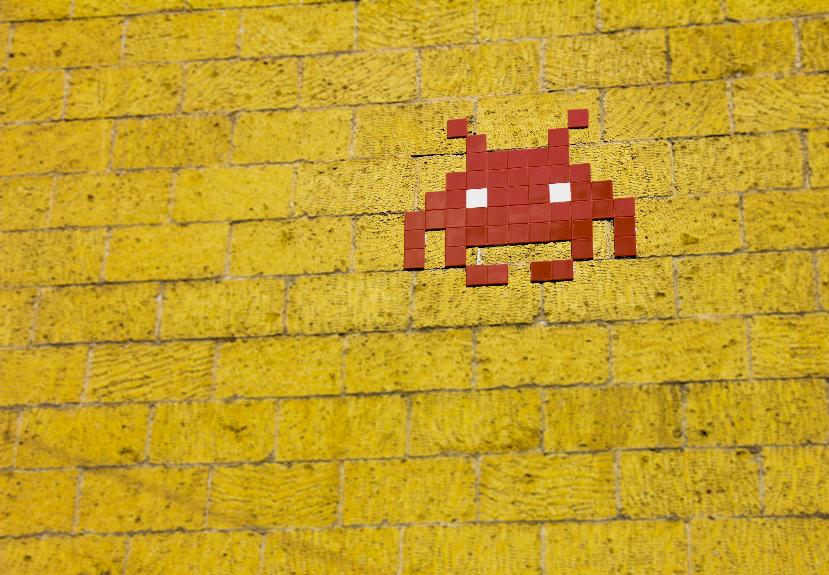No products in the cart.

Are you ready to dive into the nostalgic world of synthwave and its intriguing connection to video games?
From the early days of arcade culture to the modern era of gaming, this article will take you on a journey through the evolution of synthwave.
Discover how video games have influenced and shaped the iconic sound of synthwave, and how chiptune music has played a crucial role in its development.
Get ready to explore the fascinating intersection of pixels and synths.
The origins of synthwave in video games can be traced back to the pioneering use of synthesizers in the gaming industry.
Synthwave, a genre heavily influenced by 80s pop culture, emerged as a result of the nostalgic connection between video games and the music of that era.
With the rise of arcade gaming in the 1980s, game developers began incorporating synthesized soundtracks to enhance the gaming experience. This marked the beginning of synthwave's presence in video games and its subsequent impact on contemporary music.
The pulsating beats, retro melodies, and futuristic soundscapes of synthwave became synonymous with the neon-lit aesthetics of 80s pop culture, creating a distinct sonic identity that continues to captivate listeners today.
The marriage between video games and synthwave has proven to be a powerful combination, fueling the resurgence of both the gaming industry and the genre itself.
As you delve into the evolution of synthwave through video games, you'll discover how the genre experienced a significant rise in arcade culture.
Synthwave's distinctive sound and aesthetic perfectly complemented the neon-infused visuals and fast-paced gameplay of arcade machines. The retro-futuristic vibes of synthwave music created a nostalgic atmosphere that resonated with players, transporting them back to the heyday of arcades in the 1980s and 1990s.
Arcade aesthetics, with their vibrant colors, pixel art, and futuristic motifs, perfectly aligned with the synthwave style, creating a seamless fusion of audio and visual elements.
This rise of synthwave in arcade culture had a profound impact on retro gaming, sparking a resurgence of interest in classic arcade games and inspiring new titles that embraced the synthwave aesthetic.
One game that greatly influenced the evolution of synthwave is OutRun, with its iconic soundtrack and retro visuals. Released in 1986 by Sega, OutRun was one of the first games to incorporate synth-driven music into its gameplay. The game's soundtrack, composed by Hiroshi Kawaguchi, featured catchy melodies and pulsating beats that perfectly captured the essence of the 80s.
This combination of retro gaming's impact and iconic soundtracks created a unique experience that resonated with players and helped shape the synthwave genre. OutRun's success paved the way for other influential video games, such as Metroid, Shadow of the Beast, and Hotline Miami, to further explore the fusion of retro visuals and synth music.
These games not only provided players with immersive gaming experiences but also contributed to the growth and popularity of synthwave music.
To understand the role of chiptune music in synthwave, dive into the nostalgic soundscape that transports you back to the golden era of video games. Chiptune music, characterized by its distinctive retro sound, has played a crucial role in shaping the synthwave genre. With its roots in the limited sound capabilities of early gaming consoles and computers, chiptune music captures the essence of retro gaming and has become synonymous with the synthwave aesthetic.
The influence of retro gaming on synthwave can be seen in the use of chiptune elements such as square waves, pulse waves, and arpeggios. These sounds, reminiscent of the 8-bit and 16-bit era, evoke a sense of nostalgia and add an authentic retro feel to the music. Chiptune music not only complements the visual aesthetics of synthwave but also serves as a powerful storytelling tool, immersing listeners in a world of pixelated adventures and futuristic landscapes.
To further illustrate the impact of chiptune music on synthwave, here is a table showcasing some of the most popular chiptune artists who have contributed to the genre:
| Artist Name | Notable Tracks | Contribution to Synthwave |
|---|---|---|
| Anamanaguchi | "Endless Fantasy" | Pioneered the fusion of chiptune and rock music in synthwave |
| Lazerhawk | "Redline" | Incorporated chiptune elements into cinematic synthwave soundscapes |
| Perturbator | "Miami Disco" | Fused chiptune with dark and atmospheric synthwave compositions |
| Mega Drive | "I Am The Program" | Created intense and energetic chiptune-infused synthwave tracks |
| Com Truise | "Ether Drift" | Blended chiptune with dreamy and nostalgic synthwave melodies |
These artists, among many others, have embraced the role of chiptune music in synthwave and have contributed to the genre's evolution by infusing it with the spirit of retro gaming. The result is a captivating blend of nostalgia and futuristic vibes that has resonated with fans worldwide.
Continue your exploration of the influence of video games on the evolution of synthwave by delving into the world of modern synthwave and the ways it draws inspiration from gaming.
Modern synthwave not only pays homage to the retro gaming influence of the 80s but also embraces the nostalgia associated with it. The soundscapes and melodies of modern synthwave often mirror the electronic music found in classic video games, creating a sense of familiarity and nostalgia for gamers and synthwave enthusiasts alike.
The use of synthesizers and retro-inspired sounds in modern synthwave tracks further reinforces this connection to gaming. In addition, many modern synthwave artists incorporate visual elements in their music videos and album art that directly reference iconic video games from the past.
This fusion of 80s nostalgia and gaming influences has allowed modern synthwave to carve out a unique niche in the music industry.
Synthwave music has a rich history outside of video games. It has made its mark in the film industry, creating atmospheric soundtracks. Today, it continues to thrive in contemporary pop culture, captivating audiences with its nostalgic yet futuristic sound.
The popularity of synthwave in video games has greatly influenced the creation of new video game soundtracks. Its unique blend of retro and futuristic sounds has inspired composers to incorporate synthwave elements into non-video game soundtracks, while also boosting video game sales.
There are several notable synthwave artists who have created music specifically for video games. Their contributions have had a significant impact on both the gaming industry and the popularity of synthwave music.
The evolution of technology and video game graphics has had a significant impact on the sound and aesthetics of synthwave music. Retro gaming has played a role in shaping the genre, with nostalgia influencing its development.
Retro arcade games and role-playing games (RPGs) have exerted a significant influence on the development of synthwave music. The nostalgic aesthetics and futuristic soundscapes found in these genres have shaped the evolution of synthwave, creating a unique blend of old and new.
